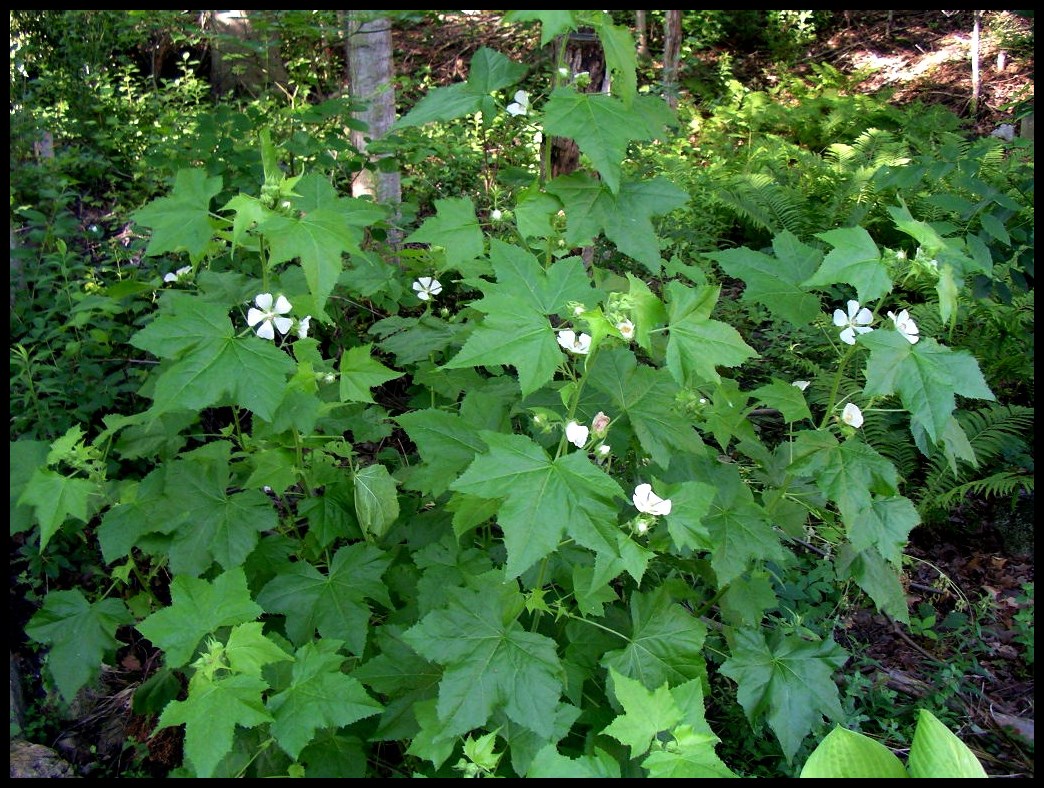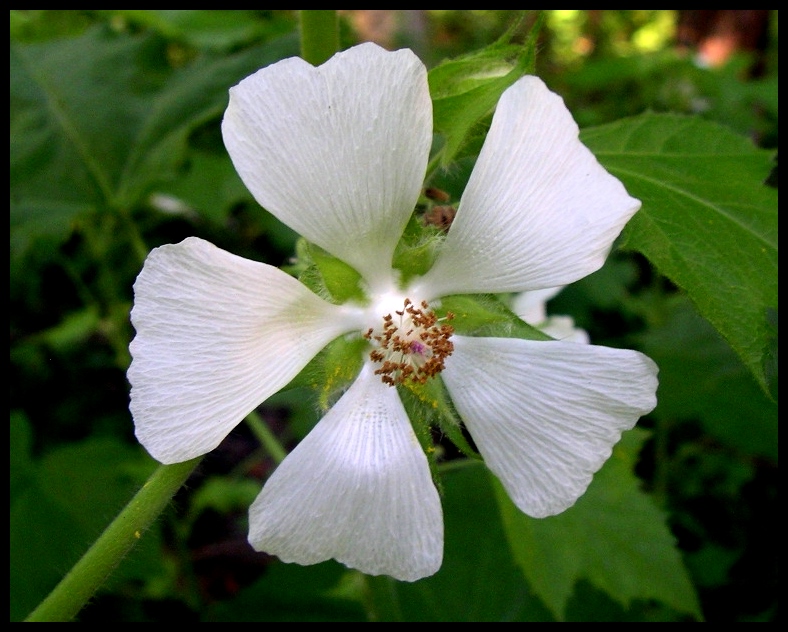Plant of the Month for February, 2014

(kit-ay-BEE-luh vy-tee-FO-lee-uh)
General Information:
Kitaibelia vitifolia is a large perennial from the former Yugoslavia. This plant won’t steal the garden show but it fills a void in the garden. It is difficult to find 5 foot tall flowering plants that grow in shade. K. vitfolia fits the bill.

Kitaibelia vitifolia; photo by Robert Pavlis
K. vitifolia is is also known as Russian hibiscus, cedar cup and Chalice flower. It starts to flower in late summer and continues until frost, producing a few white malva-type flowers in a continuous fashion. It is unaffected by any pests in my garden.
You probably will not find this rare plant in a nursery, but it is readily available as seed. ORG&HPS has it in their seed exchange most years. Seed germinates quickly, and a well grown seedling can flower the first year. Unlike other Malva plants, this one does not seed around.

Kitaibelia vitifolia; photo by Robert Pavlis
I grow it at the back of a part-shade boarder and it makes a nice backdrop to other shade loving plants. It looks more like a shrub than a perennial. Some references say it can grow to 10 feet tall, but mine is about 5 feet tall growing under sugar maples. It can take full sun and damp conditions which might allow it to get bigger.
Life Cycle: perennial
Height: 2M (5ft)
Bloom Time: late August to late October
Natural Range: Yugoslavia
Habitat: damp thickets and grasslands
Synonyms: Malope vitifolia
Cultivation:
Light: full sun to full shade
Soil: very adaptable
Water: damp to dry
USDA Hardiness Zone: 5 – 8
Propagation: division, seeds
Seedex availability (ORG&HPS annual Seed Exchange): frequently
Requires scarification. Nick or rub between sheets of sandpaper. See https://youtu.be/icB9HrqdQqU Seed coat of Baptisia and Oxytropis and other Fabaceae can be scarified by soaking in boiling water. See http://botanicallyinclined.org/continuing-the-sowing-in-hot-water
